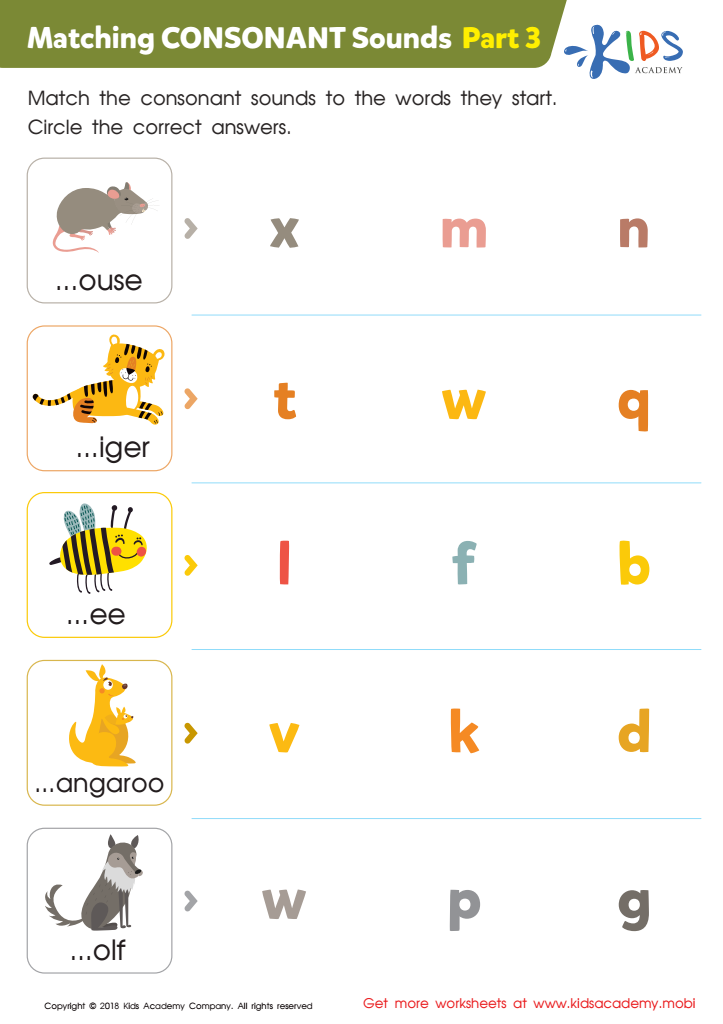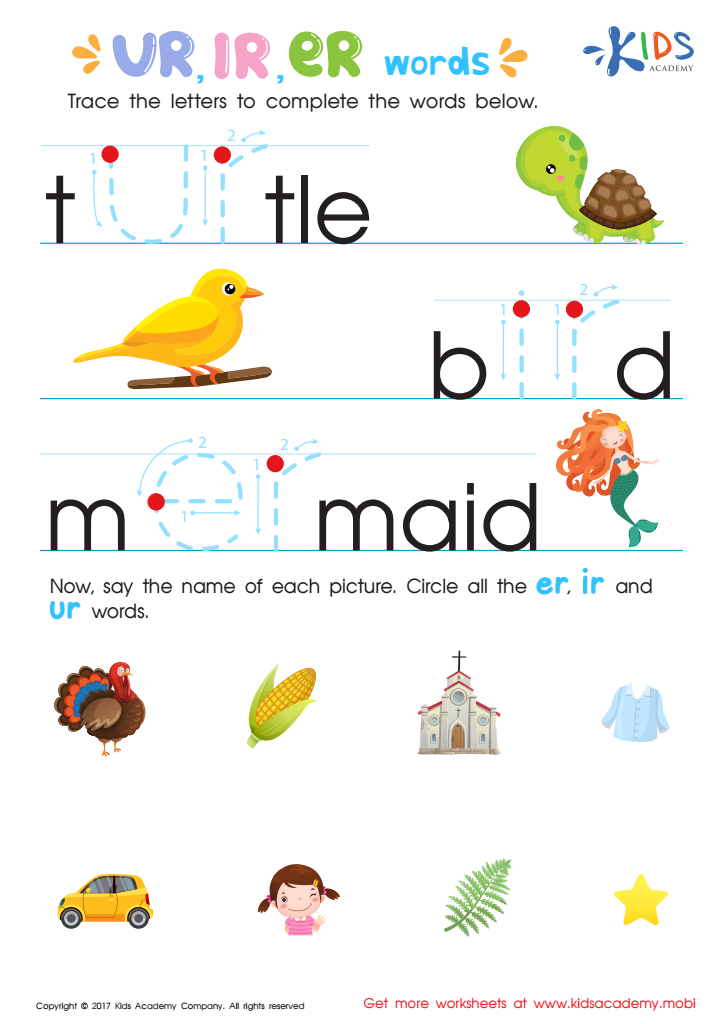Phonics recognition Normal Phonics Worksheets for Ages 5-7
11 filtered results
-
From - To
Boost your child's reading skills with our Phonics Recognition Normal Phonics Worksheets, designed specifically for ages 5-7. These engaging worksheets provide a fun yet educational approach to help young learners understand letter sounds, blends, and digraphs. Each worksheet incorporates vibrant illustrations and easy-to-follow activities to reinforce phonemic awareness and reading fluency. Whether your child is just starting their phonics journey or needs extra practice, these worksheets offer the perfect blend of entertainment and education. Discover a world of learning at Kids Academy and give your child the tools they need for reading success.


Phonics and Word Recognition: Assessment 1 ELA Worksheet


Where Is the Digraph? Worksheet


Reading: Long I and Short I Sound Maze Worksheet


Letter K Sounds Worksheet


Letter Sounds: J Printable Worksheet


Let's Count the Sounds Worksheet


Listen to the Sounds Worksheet


Let's Check for «i» Sounds Worksheet


Matching Consonant Sounds: Part 3 Worksheet


Matching Consonant Sounds: Part 2 Worksheet


IR UR ER Words Worksheet
Phonics recognition is an essential component in early childhood literacy, especially for children ages 5-7 who are at a crucial stage of language development. Parents and teachers should care deeply about this for several reasons.
First, phonics enables children to understand the relationship between letters and sounds, which is foundational for decoding words. This skill allows children to read more independently and confidently. Knowing that "c-a-t" spells "cat" through phonics helps them recognize the word in various contexts and enhances their reading fluency.
Second, solid phonics skills lay the groundwork for future academic success. Reading fluency is linked to comprehension abilities, which in turn impact performance across all subjects. Improving phonics-related skills can thereby boost overall academic performance and ensure children keep pace with curricular expectations.
Third, early success in reading builds a positive attitude towards learning. When children feel competent in their reading abilities, they're more likely to enjoy reading, resulting in greater practice and lifelong literacy.
In summary, phonics recognition for children ages 5-7 is not just about learning to read but nurturing a hardworking, independent learner. By focusing on phonics, parents and teachers can give children the necessary tools for educational success and instill a love of reading that will benefit them throughout their lives.
 Assign to My Students
Assign to My Students















